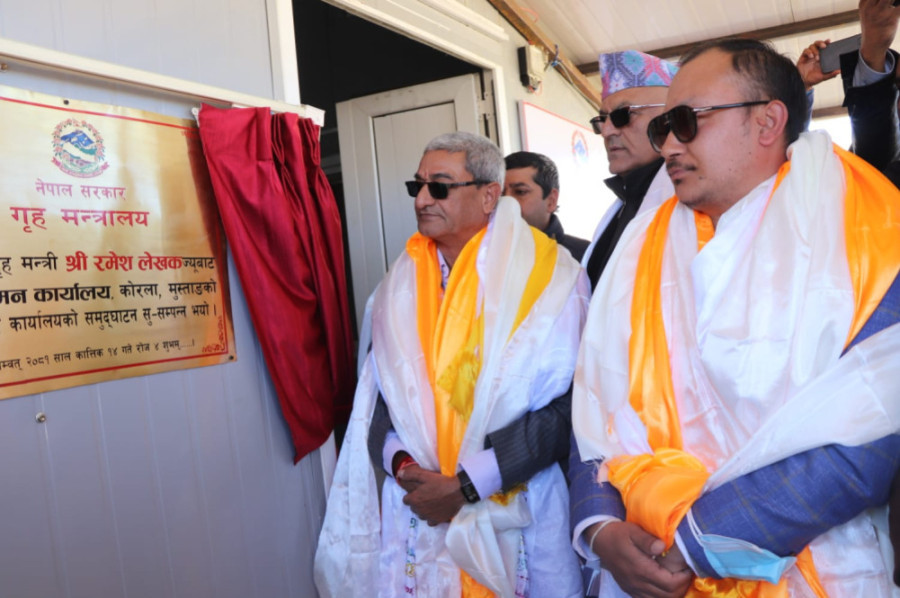Editorial
Korala lesson
As Nepal seeks other countries’ support, it must be ready to shoulder its share of responsibility.
The inauguration of an immigration office at Korala border point in Upper Mustang’s Lo Manthang on October 30 had given a message of improved connectivity with the northern neighbour. But the excitement didn’t last as the office, opened with fanfare, was closed without delivering service for a single day. While unveiling the commemorative plaque, Home Minister Ramesh Lekhak was flanked by a group of high profile officials. Gandaki Province Chief Minister Surendra Raj Pandey, heads of three security agencies, director general of the immigration department, among others, landed at Lo Manthang to attend the function. No sooner had the VIPs returned to Kathmandu, other officials deployed there also decamped as Tihar festival began the next day. But they didn’t go back even after the end of the festivities citing the biting cold of the high mountain.
Nepal has kept the border facility closed since the inauguration citing severe cold. This is a lame excuse. The weather didn’t suddenly turn cold there, nor has the situation on the ground worsened due to a natural disaster or other unforeseen events. Everyone knew that Korala border point, which is situated at an altitude of 4,650 metres, would witness a freezing cold in the winter. The authorities should have prepared before the inauguration. By contrast, the offices on the Chinese side are operating just fine.
Bringing the immigration and other offices into operation at Lo Manthang is important as the Korala border point not only connects Nepal and China but also has a potential to be a trilateral trade junction between Nepal, India and China. Nepal has been building the Kaligandaki Corridor national pride project that connects the Siddhartha Highway in the south to Korala in the north. When the road is complete, the route from Nepal-India border point at Sunauli to Nepal-China border point at Korala through Siddhartha Highway and Kaligandaki corridor can be an alternative trilateral trade route linking the three countries. While important religious destinations such as Lumbini and Muktinath are on the route, it also connects Nepal’s important cities including Pokhara and Chitwan.
Failure to bring this border point into operation has multiple effects. First, it undermines the route’s huge potential. Second, it leaves a bad impression on the Chinese. Indian, Chinese, and other countries that have been supporting us have a serious concern about Nepal’s negligence in development works. We sign agreements or inaugurate projects with a lot of noise, but don’t work on their maintenance or sustainability.
Closure of Korala immigration is a case in point. Several projects started with Indian support have met with similar fate. India’s railway company constructed the Kurta-Bijalpura rail section and handed over the rail line to the Nepal Railway Company Limited last year. It has since been helping operate the train as Nepal is still to train its own staff to run the train.
As Prime Minister KP Sharma Oli works on a wish list to be presented before Chinese leaders during his Beijing visit in the first week of December, such failure in bilateral initiatives weaken Nepal’s position. When Nepal seeks other countries’ support in its development endeavours, it must at least be ready to shoulder its share of responsibility. India and China have shown ability in infrastructure development, both at home and abroad. By failing to do even the bare minimum to take them into confidence, Nepal is severely undercutting its development prospects.




 10.12°C Kathmandu
10.12°C Kathmandu














